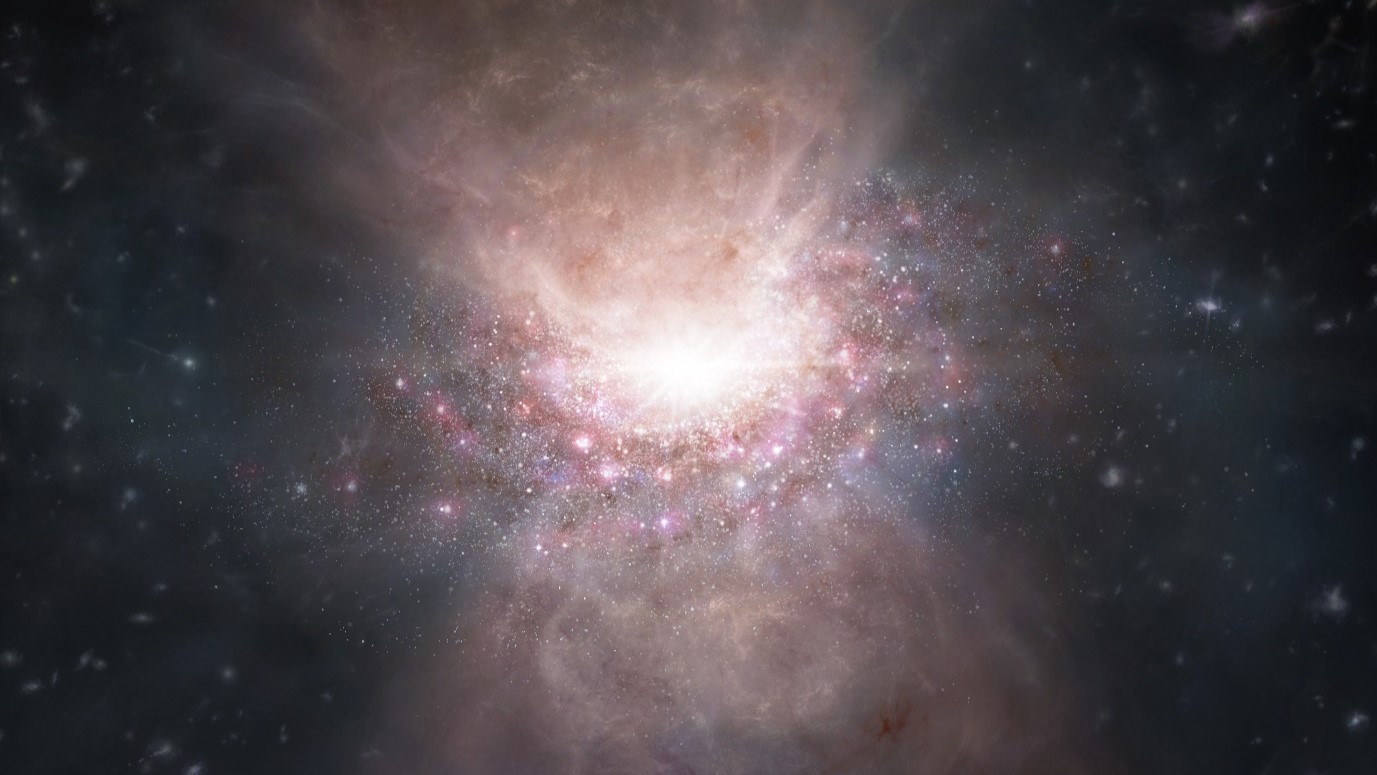Astronomers spot gigantic black hole killing a galaxy's star formation at the dawn of time
Observations made by Chile's ALMA telescope have revealed a gigantic quasar quenching a galaxy's star formation — a first-of-its-kind observation in the early universe.

For the first time ever, astronomers have spotted an ancient supermassive black hole killing a galaxy's star formation at the dawn of the universe.
The striking cosmic scene, made just 900 million years after the Big Bang, confirms theoretical predictions that extremely luminous black holes, called quasars, douse star formation by spitting out high-speed torrents of gas.
These rapids of molecular gas — composed of oxygen bonded with hydrogen — are the primary fuel for star formation. But by ejecting gas that flows too fast tto be consumed by growing stars, quasars quench the ability of stars to form in the region. The researchers published their findings Feb. 1 in the Astrophysical Journal.
"Theoretical work suggests that molecular gas outflows play an important role in the formation and evolution of galaxies from an early age, because they can regulate star formation," lead study author Dragan Salak, an assistant professor of astrophysics at Hokkaido University in Japan, said in a statement. "Quasars are especially energetic sources, so we expected that they may be able to generate powerful outflows."
Black holes are born from the collapse of giant stars and grow by gorging on gas, dust, stars and other black holes. For some of these gluttonous space-time ruptures, friction causes the material spiraling into their maws to heat up and thus emit light that can be detected by telescopes, turning them into so-called active galactic nuclei (AGN).
The most extreme AGN are quasars — supermassive black holes billions of times heavier than the sun that shed their gaseous cocoons by shooting out light blasts trillions of times more luminous than the brightest stars.
Get the world’s most fascinating discoveries delivered straight to your inbox.
Besides pushing gas outward with powerful beams of light, quasars may also fling nearby matter away at near-light-speeds after spinning it around their event horizons. This process has been detected before in the nearby universe, but astronomers were previously unsure if it occurred when the cosmos was young.
To investigate how this process affects star formation and sculpted the shape of early galaxies, the astronomers trained the radio wave-detecting eye of the Atacama Large Millimeter/submillimeter Array (ALMA) telescope in Chile on the extremely remote quasar J2054-0005, observed roughly 1 billion years after the Big Bang.
"The outflowing molecular (OH) gas was discovered in absorption," Salak said. "This means we did not observe microwave radiation coming directly from the OH molecules; instead, we observed the radiation coming from the bright quasar — and absorption means that OH molecules happened to absorb a part of the radiation from the quasar. So, it was like revealing the presence of a gas by seeing the 'shadow' it cast in front of the light source."
With this phenomenon confirmed, astronomers will look for more quasars in the early universe to understand in better detail how the beaming hearts of giant black holes moulded the very first galaxies.

Ben Turner is a U.K. based writer and editor at Live Science. He covers physics and astronomy, tech and climate change. He graduated from University College London with a degree in particle physics before training as a journalist. When he's not writing, Ben enjoys reading literature, playing the guitar and embarrassing himself with chess.


